The Difference Between Tea and Coffee Cups: A Buyer's Guide

Whether you’re an avid tea or coffee drinker or just enjoy a cuppa every now and then, I bet you just pick the first mug your hand touches in the cupboard – right? I know I certainly do. We all know there’s such a thing as tea cups and coffee cups, but do they really make that much of a difference? And what even are these differences? Surprisingly, there are quite a few differences including the shape, size, and even its handle. Our buyer’s guide will take you through the differences between tea and coffee cups, so whether you’re looking just for interest or are trying to make the most out of your morning beverage, read on to find out more.

The main difference: tea cups vs. coffee cups
Indeed, the one main difference between tea and coffee cups, however obvious it may be, is that tea cups are specifically designed for the purpose of enjoying tea, while coffee cups are designed for the enjoyment of coffee. They’re both designed to maximise the flavour and temperature of the drink through its shape, size, material, and even the handle. Usually, tea cups and coffee cups will both be served with a saucer – a small plate for the cup to sit on.
Traditionally, tea was enjoyed in line with a few etiquette regulations; it was always a more elegant drink – how it’s seen in the movies with wealthy people sipping away with two fingers tucked into a dainty handle. While a coffee cup was purely designed to keep its contents warm and that’s all it needed; traditionally, coffee is more of a casual affair, there is a lot less etiquette required.
Not all tea cups, and not all coffee cups are the same, there are still variations within each because you can get different types of tea and different types of coffee which require different ways of being served and enjoyed, so we are just covering general differences when looking at each type.
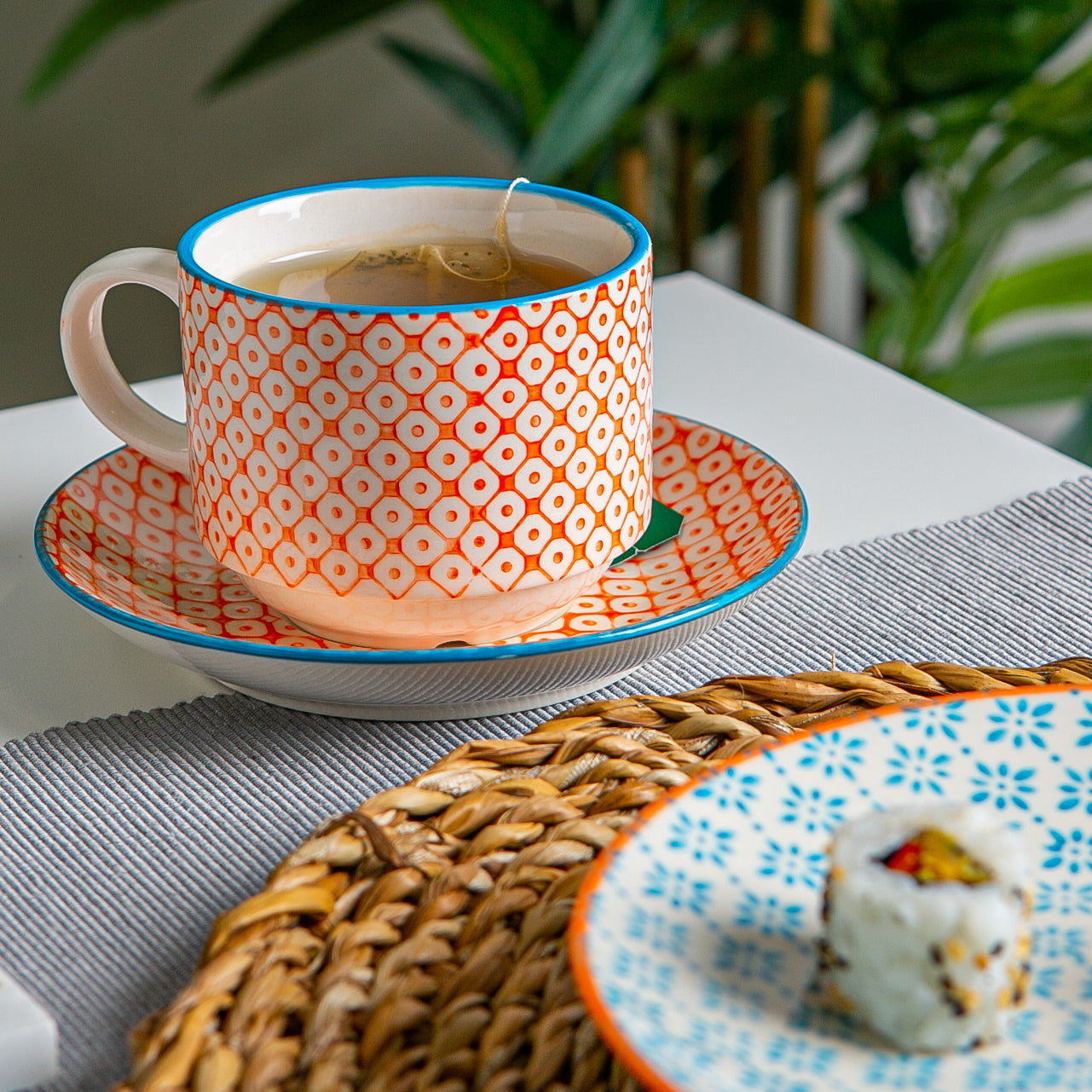
Tea cups
Tea cups are most often made from porcelain and china, while high quality tea cups, those most likely used for fine dining, will usually be made with bone china – the addition of bone ash for extra durability and a translucent finish. Most porcelain and china tea cups will have a vitrified glaze which makes them non-reactive, and they are non-porous, so the precious flavours won’t be altered.
Glass is becoming increasingly popular for both tea and coffee cups with its sleek modern aesthetic, particularly popular with flavoured teas and layered coffees so the colours and infusions can be seen.
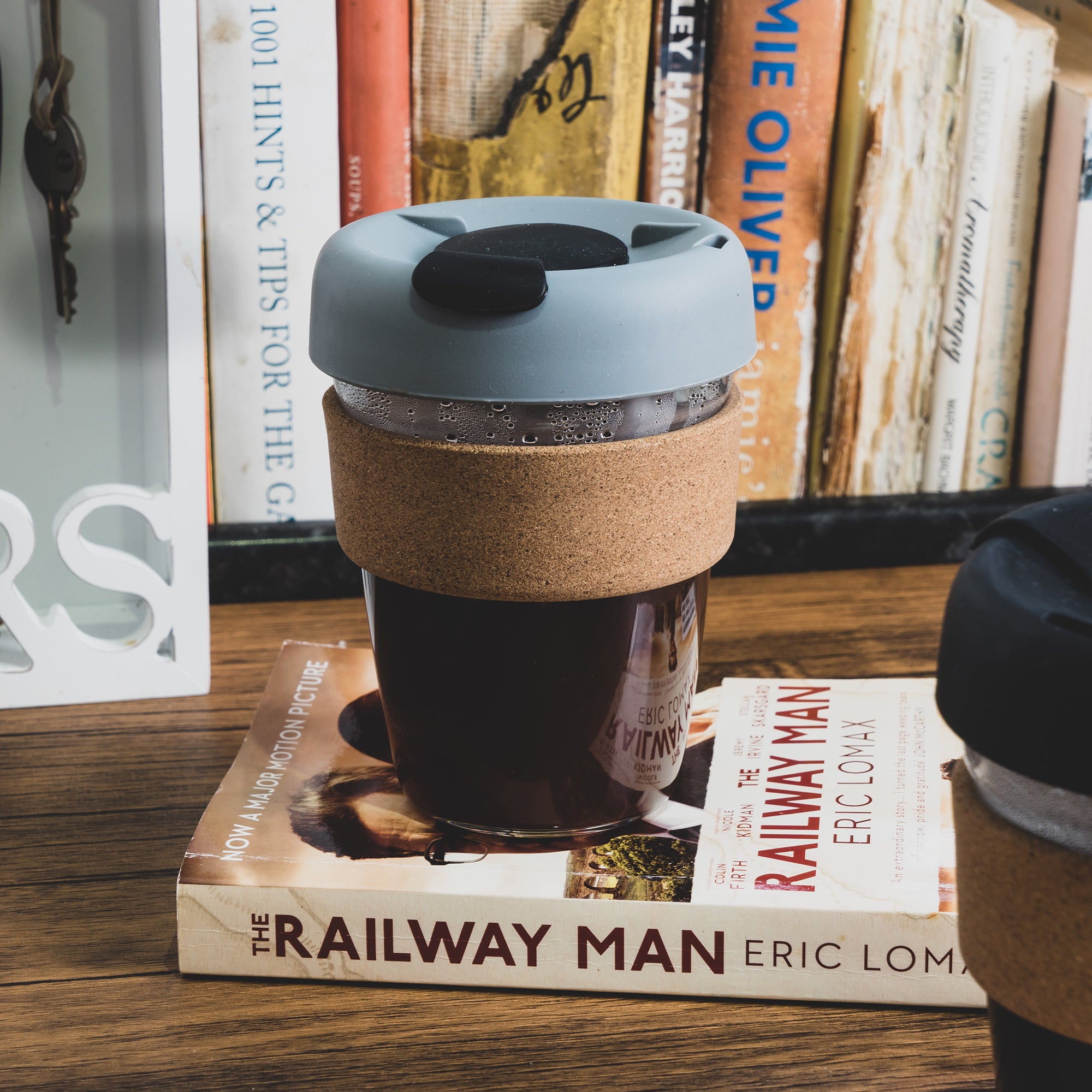
Coffee cups
The materials used is not a huge difference between tea and coffee cups because coffee cups are also most often made from ceramics due to their great durability and non-reactive benefits. However, as coffee becomes increasingly popular many other materials are being used to cater for it. For example, coffee is often consumed on the go so we have travel mugs, often made from stainless-steel and other thermo-protective materials. Indeed, we also have disposable cups we see in cafes which are made from paper and plastic polyethylene.
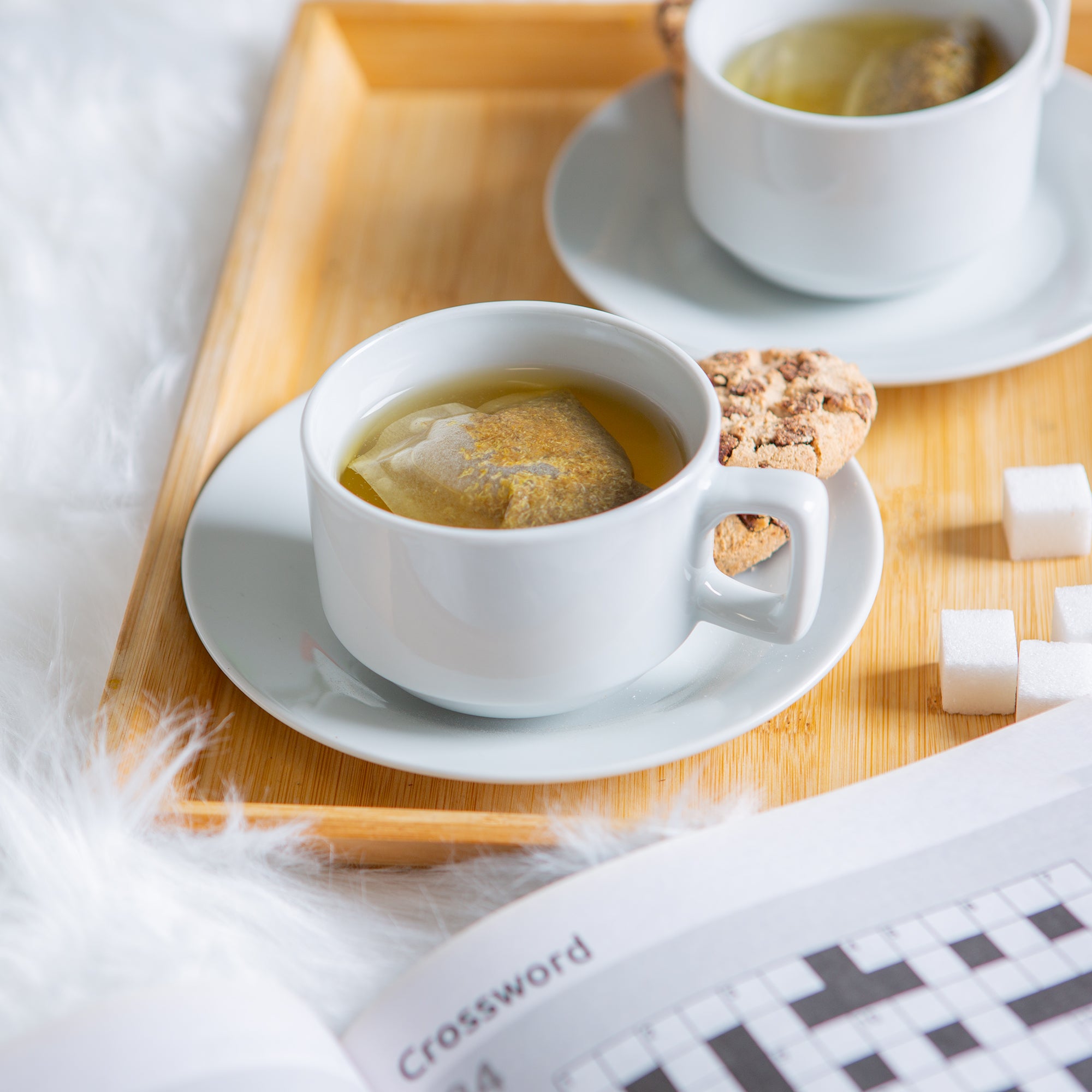
Tea cups
A tea cup can hugely vary as to the capacity it holds; you may come across tea cups that hold 80ml but also some that hold 180ml – which makes the difference between tea and coffee cups minimal.
Traditionally tea is consumed during the middle of the afternoon – what we know as afternoon tea – which wasn’t created to replace dinner, so consuming high amounts wasn’t practical, but as tea has increasingly become a more casual drink, the capacity in which we drink it has increased to suit alternative times of the day.
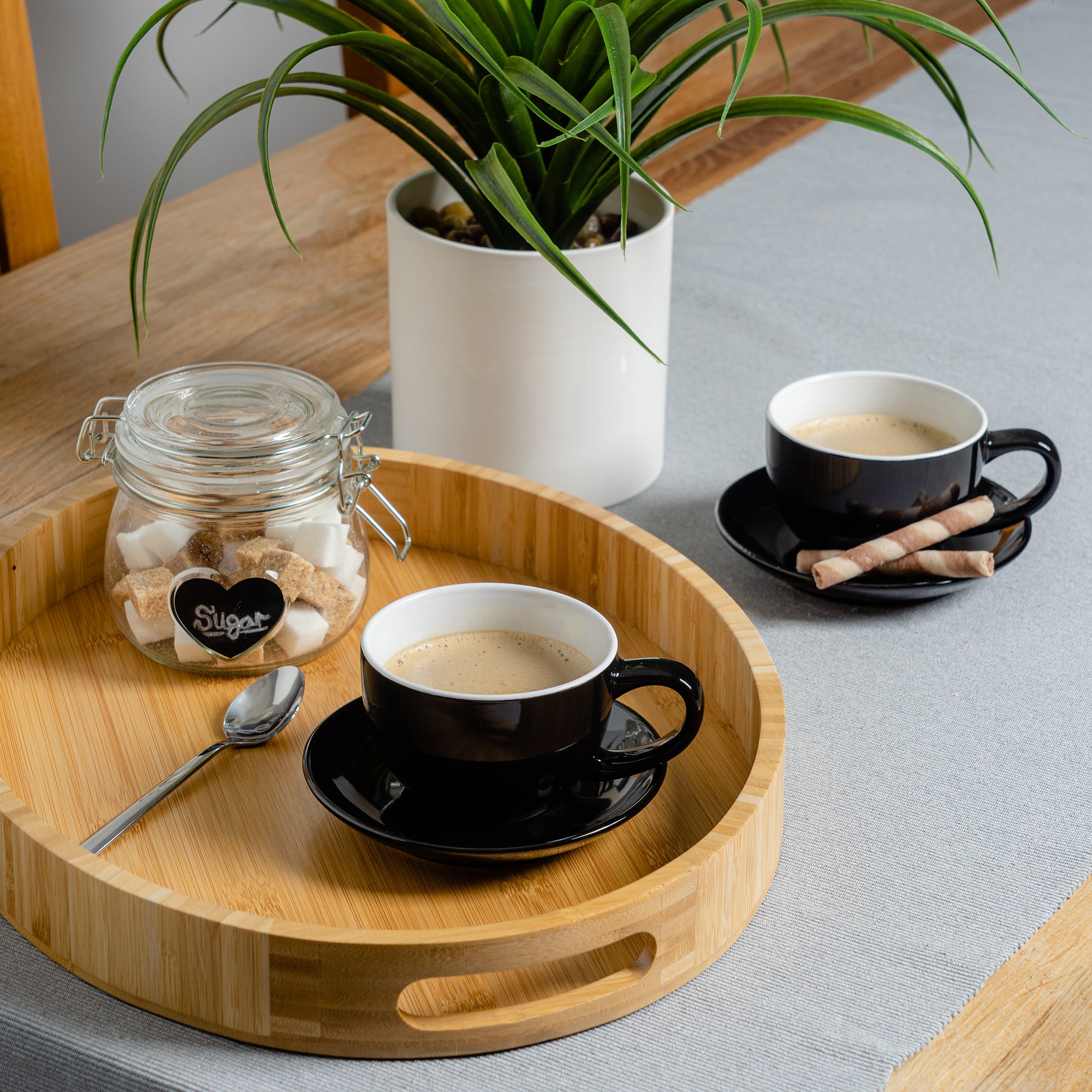
Coffee cups
The capacity a coffee cup holds will be mostly down to the type of coffee it is designed for – there is no generic capacity that suits all, but if it had to be pinned down it would probably be around 200ml.
For example, lattes, cappuccinos, mochas and americanos are often in very large, rounded cups so there is plenty of room for milk, foam, and water, while macchiatos and espresso are much smaller due to a much higher concentration of coffee.
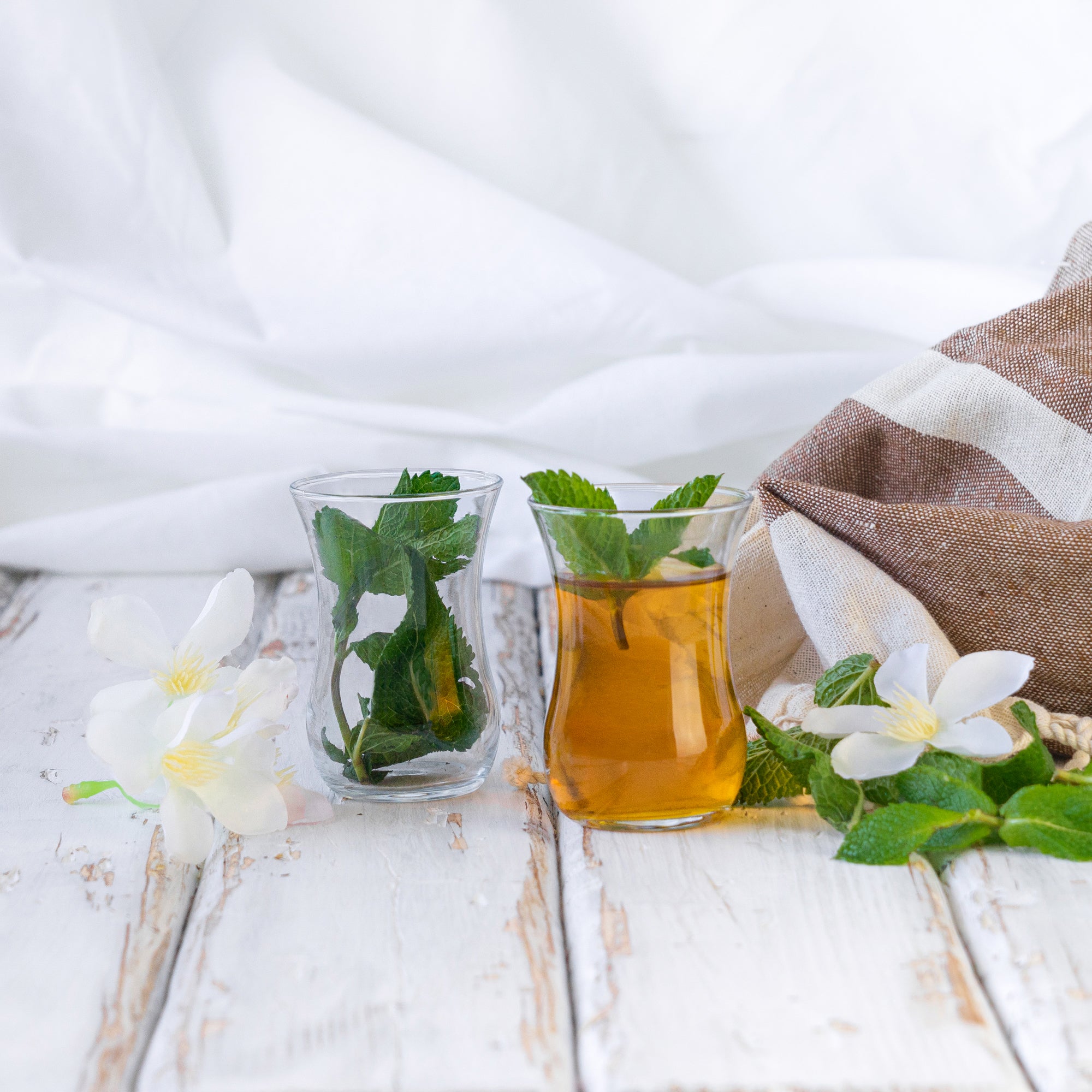
Tea cups
Possibly the most obvious difference between tea and coffee cups, or the most noticeable, is their shape. Tea is made using boiling water, so tea cups were traditionally designed with flared rims to maximise the surface area that is exposed, allowing it to cool faster, for optimum flavour and enjoyment.
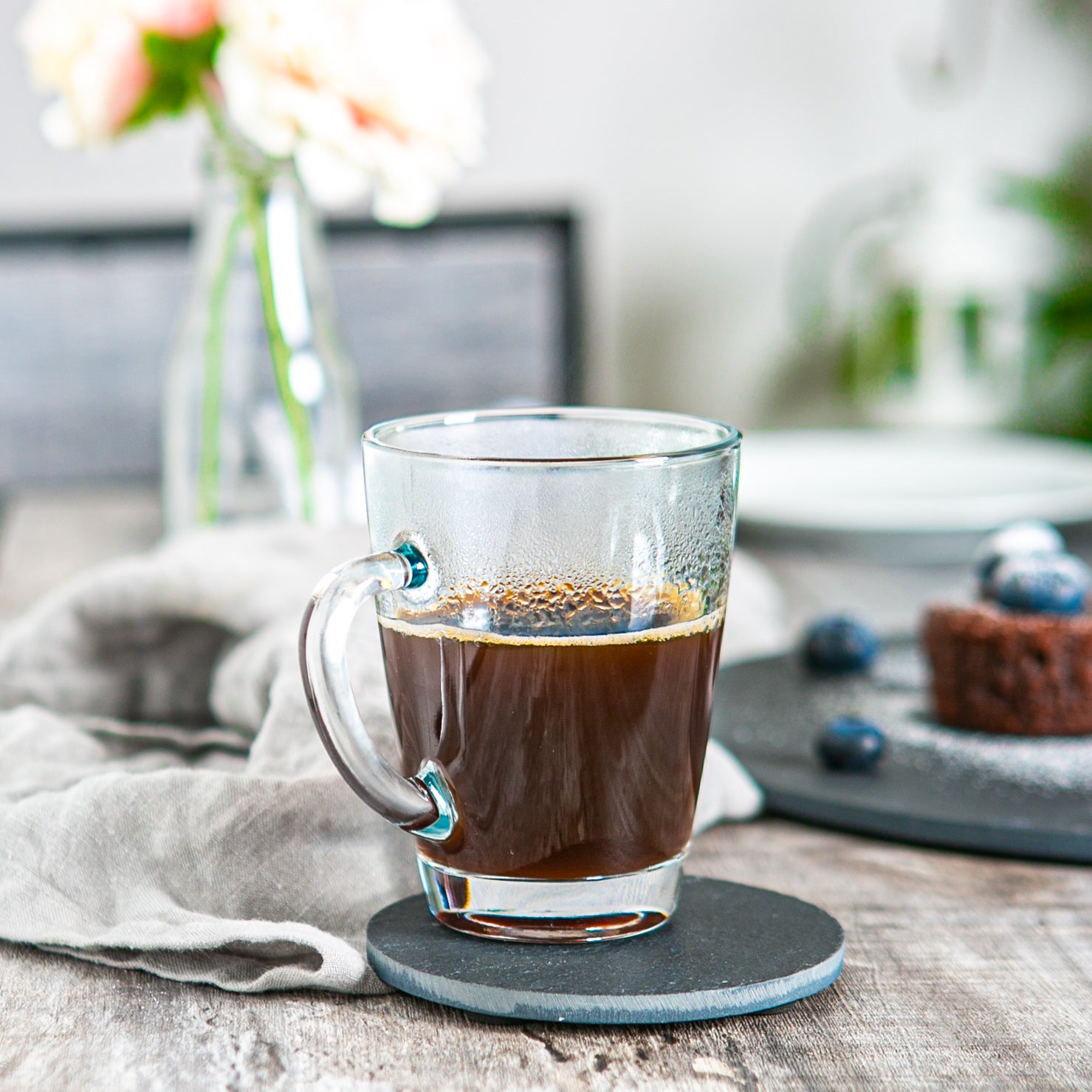
Coffee cups
On the other hand, coffee cups are designed to keep the contents as hot as possible because unlike tea, coffee is not usually made with boiling water (to avoid burning the beans). This is why coffee cups are usually taller and narrower than tea cups so there is less exposed surface area.
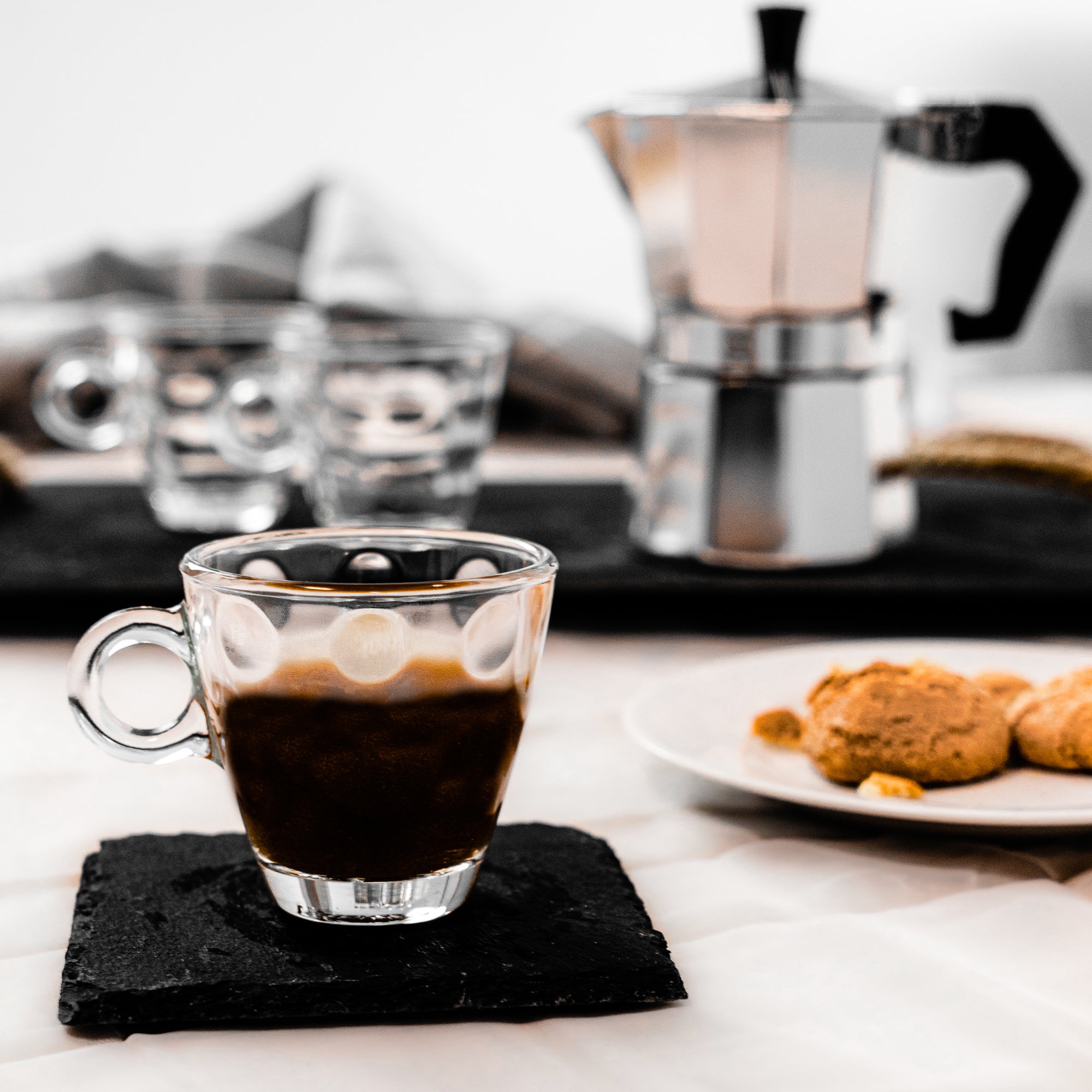
Tea cups
As we’ve covered, the oldest difference between tea and coffee cups is the fact that drinking tea came with a certain etiquette while coffee did not. Tea cups are known for their tiny, dainty handles which only fit a thumb and one or two fingers in, specifically designed to make drinking tea an elegant and dainty task. That is also why tea cups are smaller than coffee cups because holding a cup with one or two fingers doesn’t offer great stability but it’s enough to keep your fingers away from the hot cup.
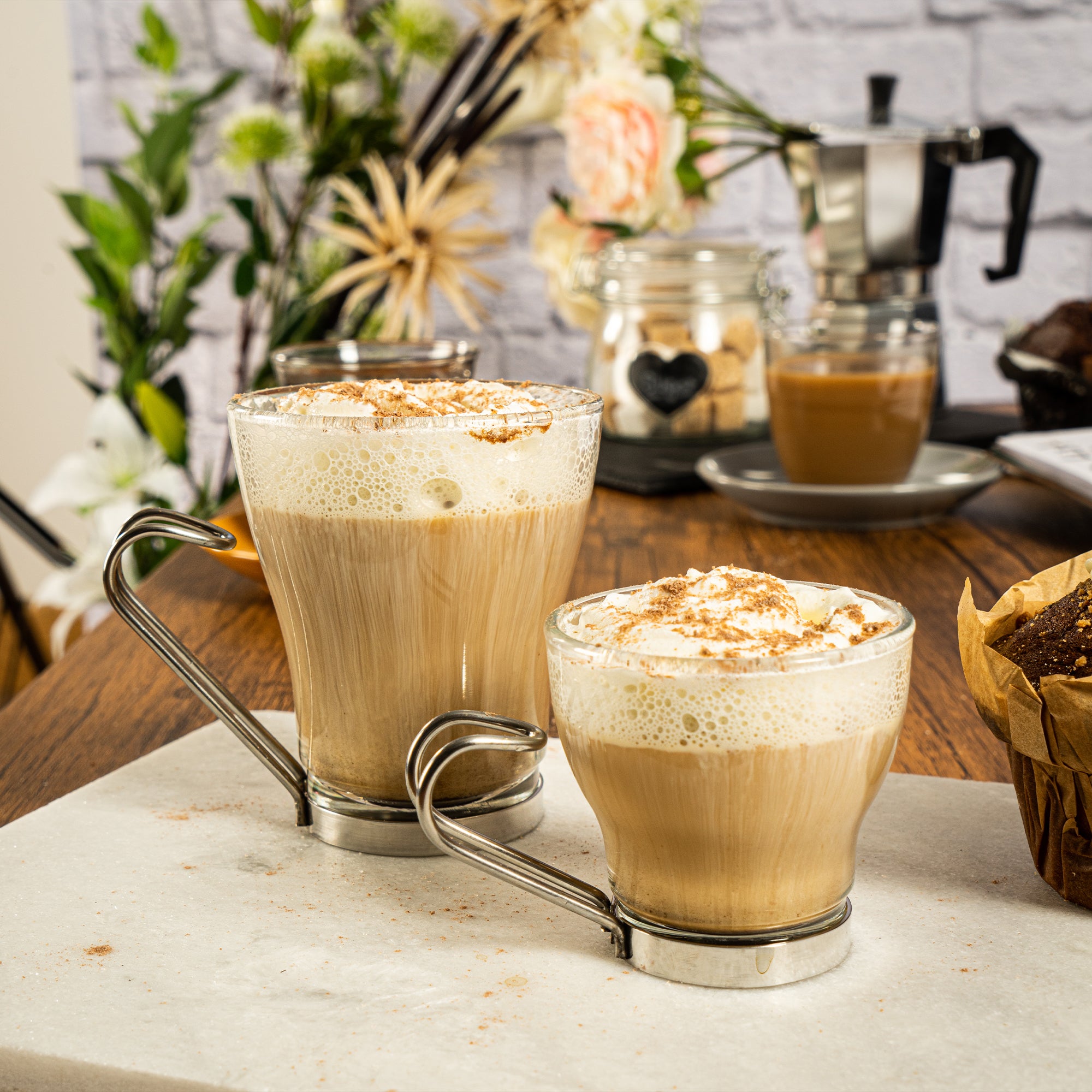
Coffee cups
The handles on coffee cups needs to offer much more stability than tea cups because they often hold higher capacities; usually you will have a handle that fits three or four fingers, and it wouldn’t be uncommon to be able to grip a coffee cup with your whole fist! Drinking coffee doesn’t require as much elegance – and that sounds good to me.
Top tips when buying tea and coffee cups
- Ensure it is comfortable to hold!
- Don't get too hung up on the differences between tea and coffee cups - if it's good for you, use it!
- With such a variation of cups holding different capacities, be sure to buy the right size for your drink.
- If you're creating your own tea set, be sure to bu ythe right size tea cups for your tea pot.
- If you drink a variety of coffees, have a variety of coffee cups!
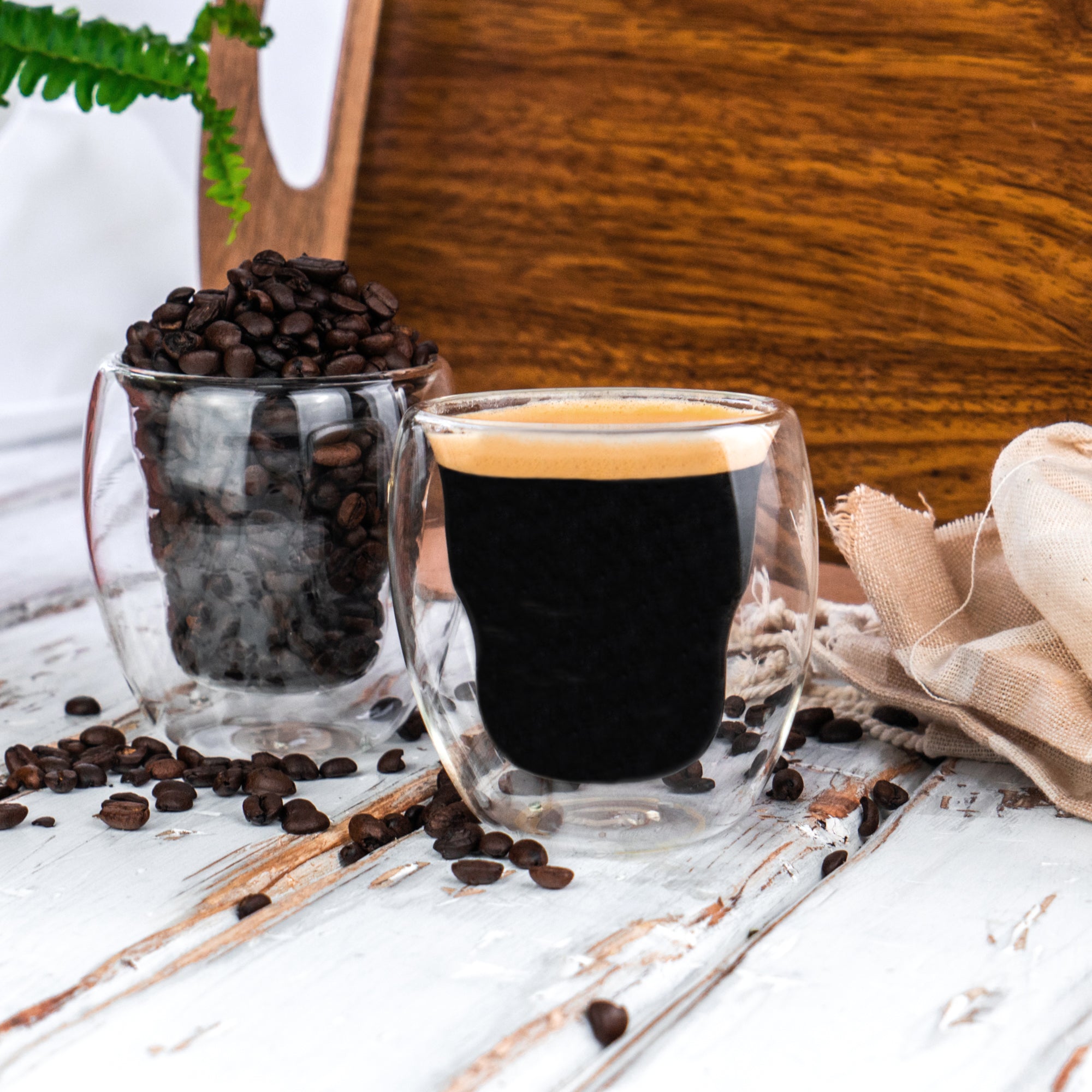
Crafted from tempered glass, these modern, stylish coffee glasses are ideal for all your favourite coffees, particularly your layered lattes and macchiatos. Tempered glass has an incredible thermal shock resistance, so they won’t crack under sudden temperature changes and the double walled design insulates your coffee keeping it warmer for longer!
Double Walled Coffee Glasses by Rink Drink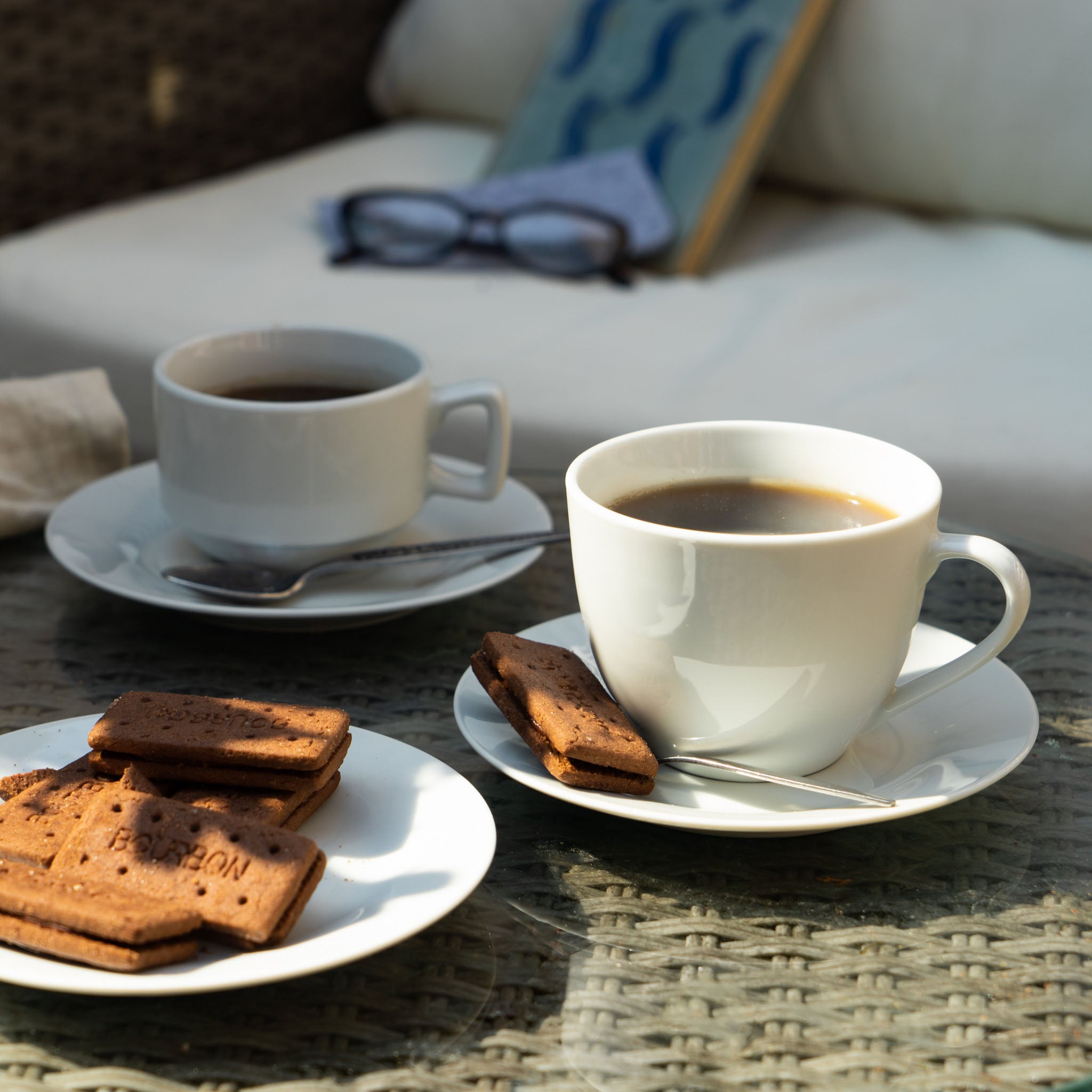
Our White Cappuccino Cups & Saucers are a staple for every home made from fully vitrified porcelain that’s hard-wearing, durable, and easy to clean, as well as non-porous, so it won’t absorb any colours or flavours. The classic white design is unbeatable in all décor styles and is perfect for both home and professional use.
White Cappuccino Cups & Saucers Set by Argon Tableware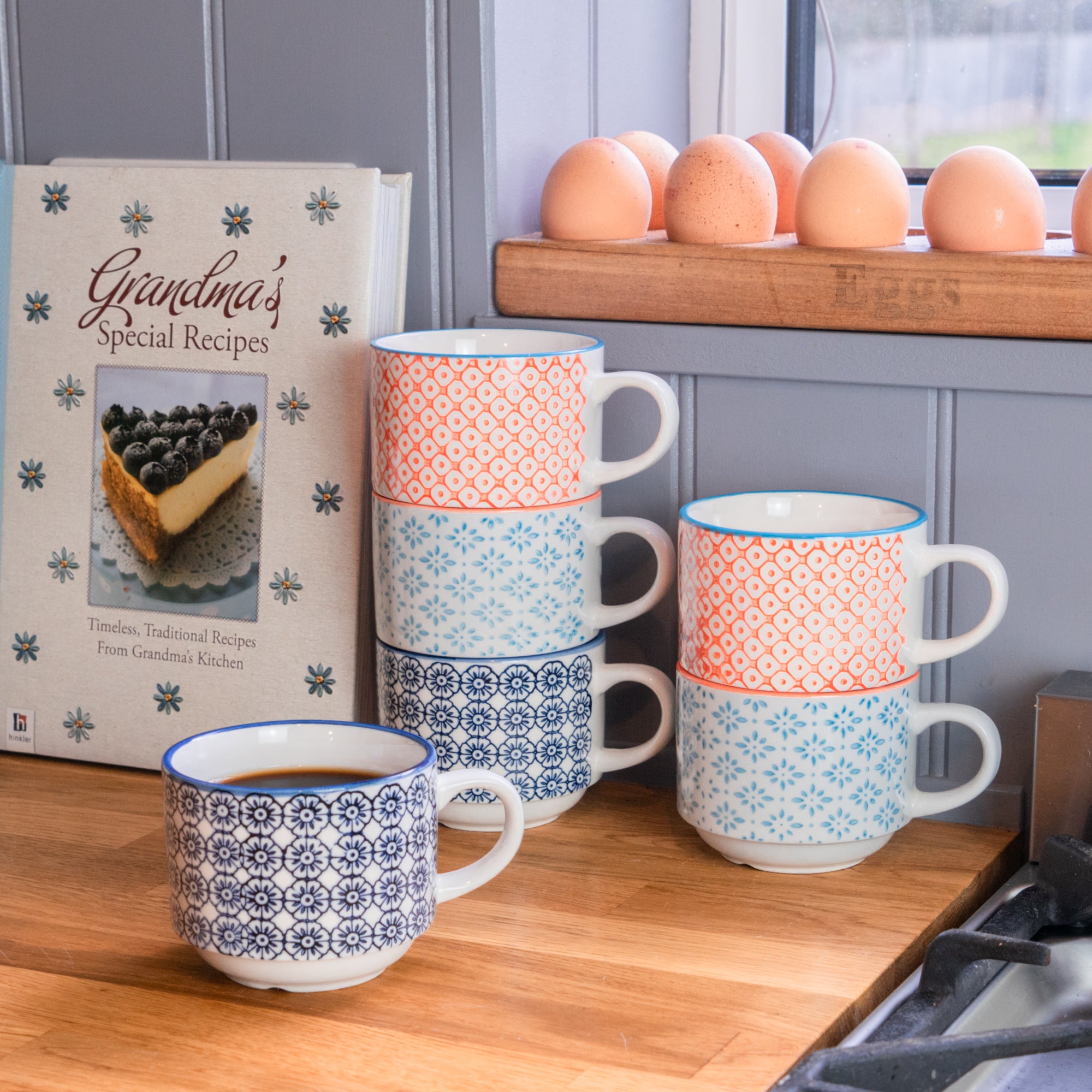
Designed for tea lovers, our gorgeous stacking tea cups and saucers feature a Japanese inspired hand printed design that floods your kitchen with a vintage appeal like no other and the hand printed nature of these tea cups guarantees uniqueness with every piece. Made in a stackable shape, you don’t need to worry about space, they’ll simply stack inside one another, staying out the way until you need them again.
Hand Printed Stacking Tea Cups & Saucers by Nicola Spring